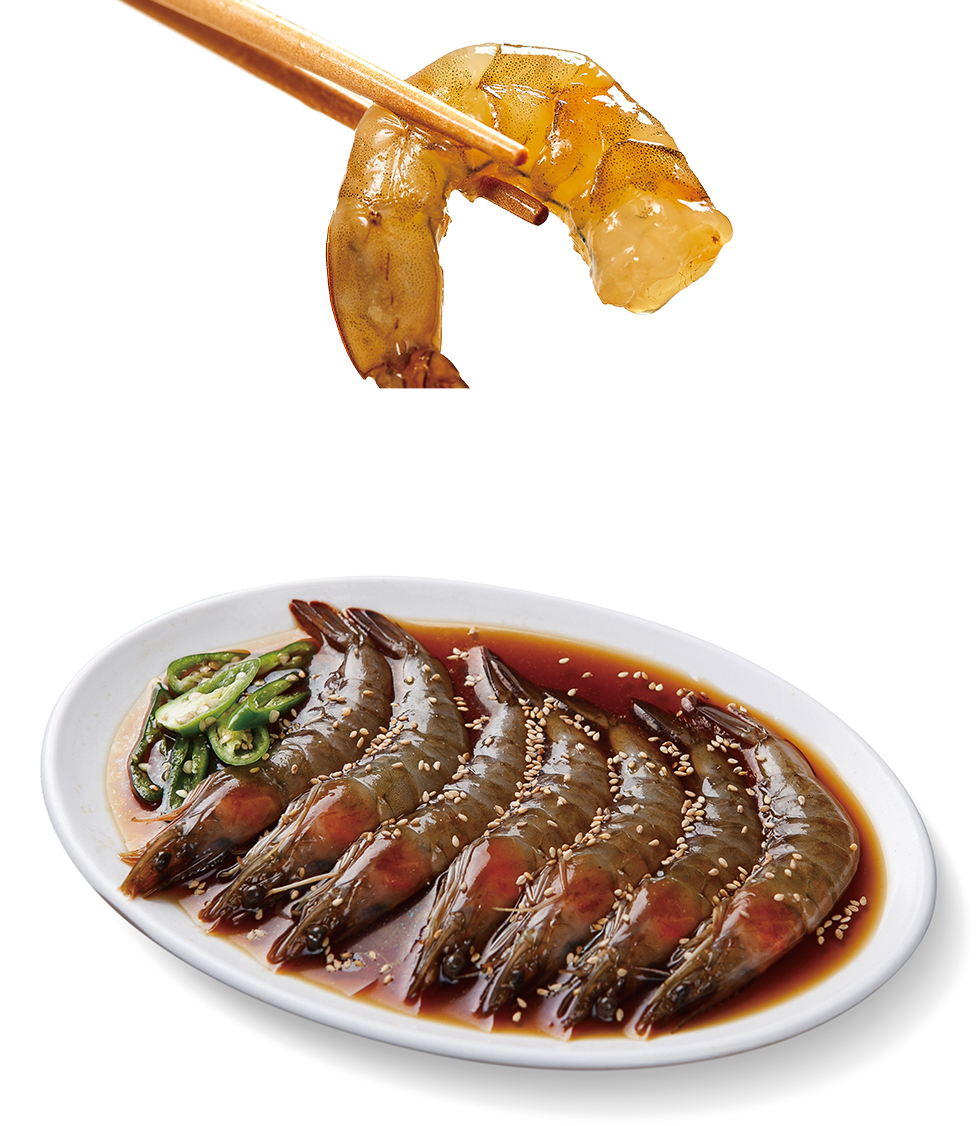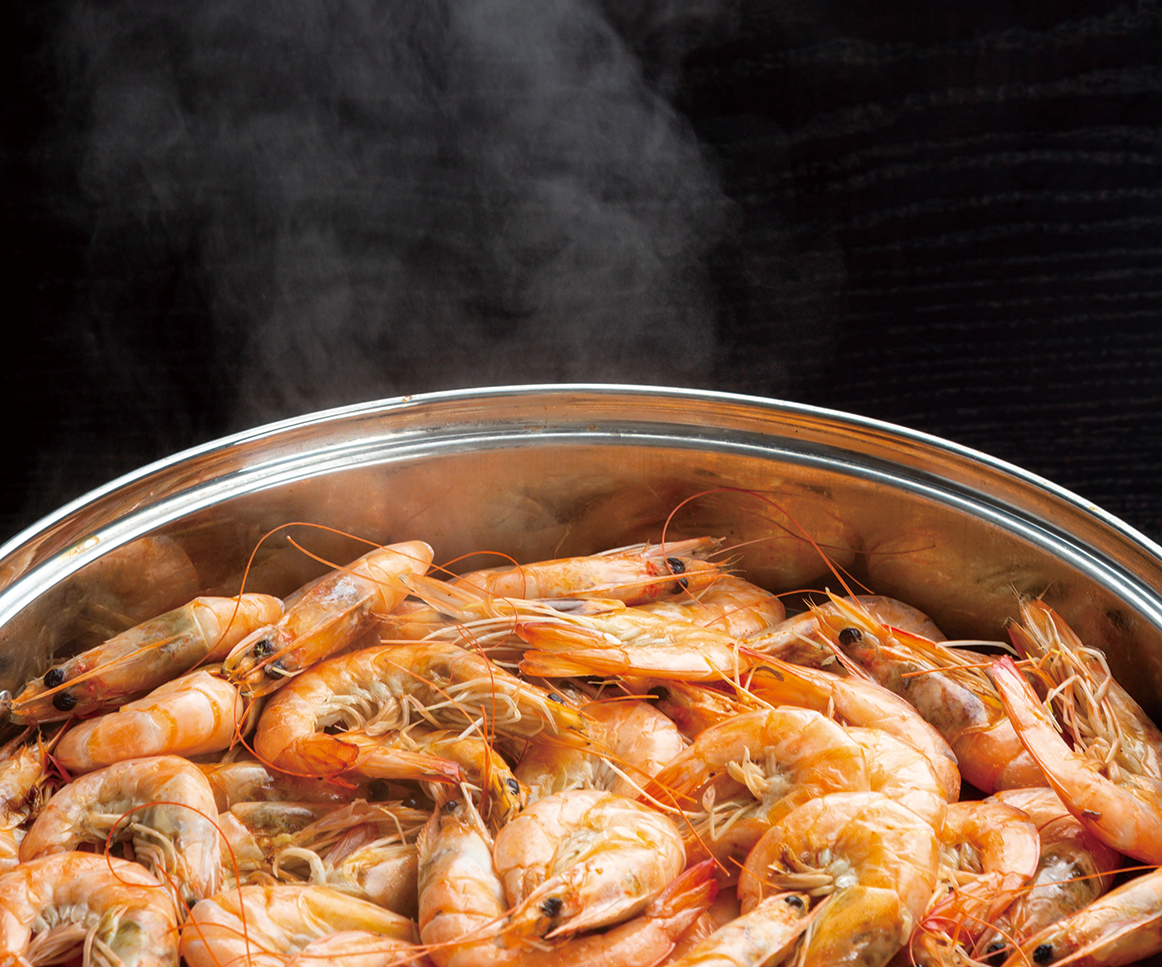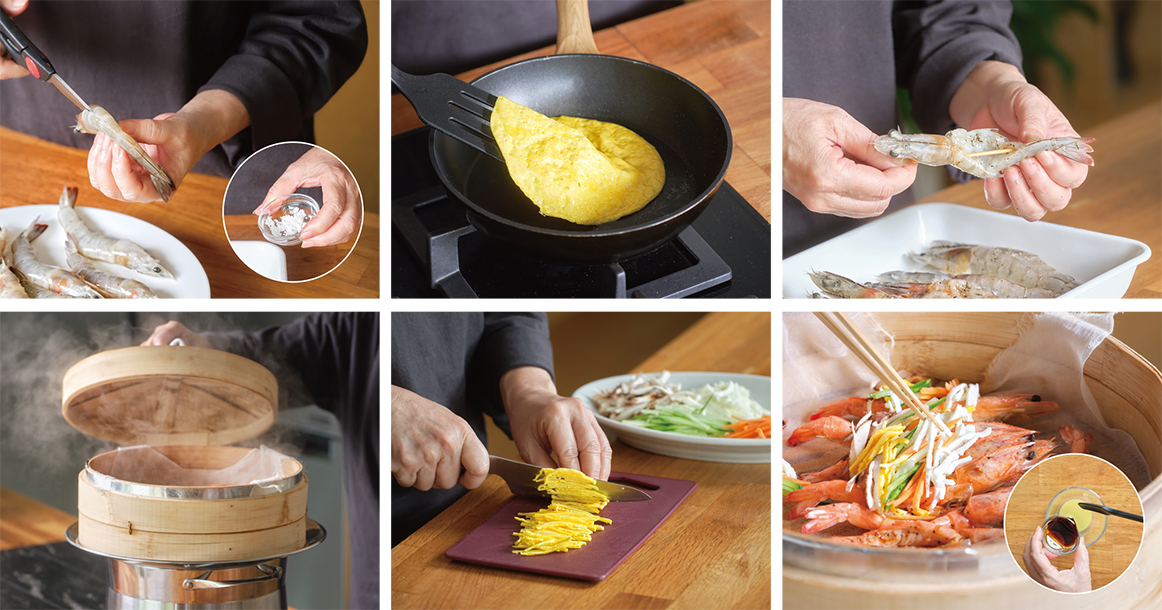
Koreans have fished shrimp for centuries, harvesting abundant resources from the seas that surround their peninsula on three sides. Shrimp forms a cornerstone of the Korean diet, from its use in kimchi to the globalization of Korean snacks. It’s time to discover the unique Korean story of shrimp.
Writer. Tim Alper
As the inhabitants of a peninsular country, Koreans have a long and storied connection with the sea. It has formed a natural barrier for would-be enemies and helped catapult the ship-building industry to worldwide fame. But most of all, it has provided the nation with sustenance and nutrition.
Nobody knows for sure when Koreans started shrimping. But historical records from the time of the Goryeo Kingdom (918-1392), a record titled “Illustrated Account of the Xuanhe Embassy to Goryeo” (1123), make note that ordinary people in Goryeo consumed shrimp, providing a concrete example of the ingredient’s presence in daily life at that time.
By the time of the Joseon Dynasty (1392-1910), shrimp had become an important part of the entire country’s diet, with fermentation methods helping cooks ensure their preparations did not spoil. “The Veritable Records of King Sejong” include mentions of saeujeot (salted shrimp) being offered to the king and sent as tribute to the Ming Dynasty. Additionally, the 1837 animal study record “Nanhoeomokji” describes how fishermen loaded fermentation jars and salt on their boats and fermented saeujeot on board immediately after catching shrimp. This reflects traditional practices of shrimp fermentation documented in royal records and later historical texts, confirming that shrimp was both a prized royal food and a common maritime fermented product in Korea’s history.
Shrimp was more than just an ingredient; it became part of the country’s shared taste memory, linking royal tables with everyday kitchens across generations.
 © TongRo Images Inc.
© TongRo Images Inc.
Traces of shrimping heritage can be found all over Korea. Scores of shrimp-related proverbs and idioms have become part of the Korean language, reflecting to how ubiquitous and important this food once was.
“Sinjeungdonggukyeojiseungram” (The Revised Augmented Survey of the Geography of Korea), a comprehensive geographical guide to the country published in 1530, makes reference to several seaside settlements that were known as shrimping ports. Jeollanam-do Province and Jeju Island also have a long history with shrimp, which remains a local delicacy often sought out by visiting food tourists.
The oldest forms of shrimping involve fresh-water methods in streams near the sea. These make use of special nets and networks of twigs, designed to catch smaller shrimp on their journeys to the sea.
By the Joseon Dynasty, shrimping had become a major industry. In Nagwoldo Island, Yeonggwang-gun County, Jeollanam-do Province, you can see traces of this at a new dockside monument to the Jungseon, a traditional shrimp-fishing boat. The captains of this incredible vessel carefully studied wind patterns to take the Jungseon into deep ocean waters, where they could deploy their huge nets and traps.
 © National Institute of Biological Resources.
© National Institute of Biological Resources.
Their catch mainly consisted of very small shrimp. And this was often intentional. These small shrimp may not look much to Western diners, who are used to eating much larger shrimp. But Korean cooks value even the smallest of shrimp, the kind that other cultures might only use as bait on fishing hooks.
With these tiny creatures, Korean cooks often make jeotgal (salted seafood), a salt-fermented, red pepper-seasoned preparation that can last for months on end if stored correctly. This can be served as-is, a protein-rich and flavorful preparation that makes an ideal foil for a bowl of steamed rice. Alternatively, it can be used as an ingredient in other dishes. Indeed, this is often the case for kimchi. Unsurprisingly, Jeollanam-do Province cooks make liberal use of jeotgal in their kimchi, making for some of the country’s richest kimchi flavors.
 Saeujang, fresh shrimp marinated in ganjang with onion, chili, garlic, sugar and other seasonings © TongRo Images Inc.
Saeujang, fresh shrimp marinated in ganjang with onion, chili, garlic, sugar and other seasonings © TongRo Images Inc.
However, not all Korean shrimp are small. Bigger creatures can grow up to the size of an adult human’s palm. These shrimp are known as daeha, and are known all over Korea as an autumnal speciality. Daeha are usually eaten whole, either grilled at the dining table on a bed of salt or marinated in ginger, onion, garlic and ganjang (soy sauce) to make saeujang. This savory dish, served cold, may remind some well-traveled diners of Peruvian ceviche.
Larger and medium-sized shrimp, such as the popular kkotsaeu—a species mostly caught in the East Sea—are sometimes eaten in raw preparations, seasoned with ganjang and popular at hoe (raw fish) restaurants all over the country.
 Daeha, a popular Korean shrimp, is usually served steamed or grilled. © TongRo Images Inc.
Daeha, a popular Korean shrimp, is usually served steamed or grilled. © TongRo Images Inc.
Korean shrimping changed forever in the 20th century, with electric and fuel-powered boats allowing fishing crews to swap their Jungseon vessels for faster, longer-range alternatives. Scientists began to study shrimp life cycles in greater detail, allowing fishing crews to better understand the creatures they were trying to catch.
Globalization also allowed importers to bring in shrimp from overseas producers, while freezing technology allowed crews to ensure their larger catch did not spoil.
As a result, the Korean shrimp industry boomed, giving rise to scores of new shrimp-containing recipes. Dishes like haemulpajeon (seafood and green onion pancake) made use of prawns to create mouthwatering accompaniments to traditional and imported alcoholic beverages.
In the early 1970s, a leading food processing company developed a stick-like snack made of rice and shrimp. This snack, sold in bags like American potato chips, proved an instant hit. In recent years, its popularity has ballooned the world over—to the extent that you can now buy it in major U.S. supermarkets, as well as grocery stores in over 75 countries. No matter what your preferences, in Korea, you are bound to find a shrimp preparation for you.
 1. Saeujeot is a salty condiment made from tiny shrimp. In Chungcheong-do and Gangwon-do provinces, it’s commonly paired with sundae (blood sausage). © TongRo Images Inc.
1. Saeujeot is a salty condiment made from tiny shrimp. In Chungcheong-do and Gangwon-do provinces, it’s commonly paired with sundae (blood sausage). © TongRo Images Inc.
2. Saeujeot adds a savory, oceanic flavor that enhances dishes like aehobakbokkeum (stir-fired zucchini). © TongRo Images Inc.
3. Mareunsaeubokkeum, dried shrimp stir-fried with seasoning © TongRo Images Inc.
10 prawns, 1 egg, 1/3 cucumber, 1/3 carrot, 3 golden oak mushrooms, 2 Tbsp cooking wine, a pinch of salt, a pinch of pepper, 1 Tbsp ganjang (soy sauce), 2 tsp vinegar, a little mustard, a little cooking oil

